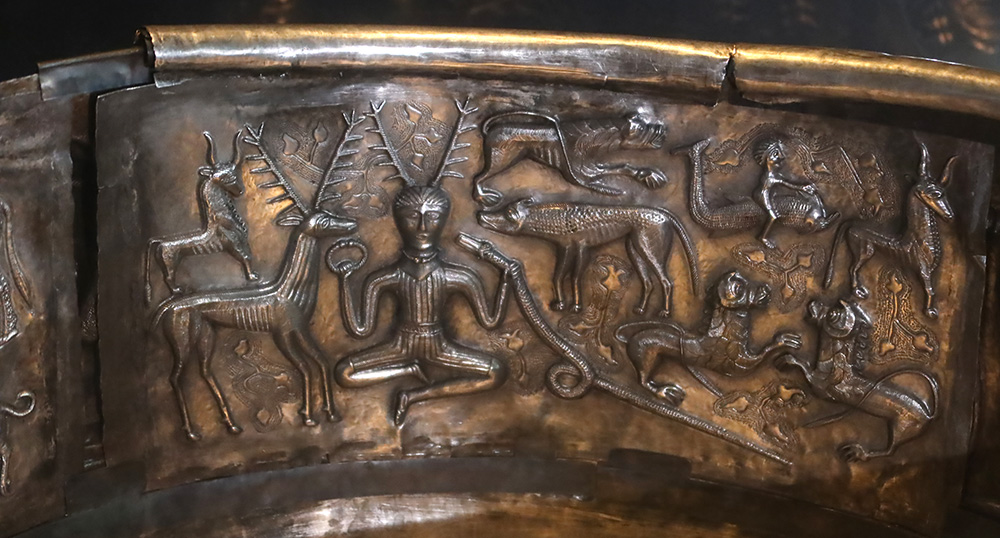
The Gundestrup Cauldron, housed at the National Museum of Denmark in Copenhagen, stands as one of the most remarkable archaeological finds from the Iron Age. Discovered in 1891 in a bog near Gundestrup, Denmark, this large silver vessel is believed to have been crafted around 150-50 BCE, though the exact origins of its creators remain uncertain. Often associated with the Celts, the cauldron’s intricate artwork and rich symbolism have made it a centerpiece of scholarly discussion and public fascination.
The cauldron itself is a complex, ornate object, made from over 100 pieces of silver. It was likely used in religious or ceremonial contexts, perhaps as a ritual vessel. Its size and craftsmanship suggest it was an object of significant importance, likely commissioned by a high-status group or leader. The cauldron is divided into scenes that depict deities, animal motifs, and ceremonial practices, many of which are consistent with what is known about Celtic religious beliefs during that time.
One of the most striking features of the Gundestrup Cauldron is the detailed relief work that adorns its panels. These reliefs depict gods, warriors, and animals, including stags, bulls, and serpents, which have been interpreted as symbols of the natural world and power. The central figure on the cauldron, often identified as a horned god, is depicted holding a staff, possibly symbolizing divine authority. The presence of these figures strongly suggests the cauldron had a ritualistic or spiritual function, potentially used in sacred ceremonies connected to fertility, death, or the changing of seasons.
The exact origin of the cauldron remains a subject of debate. Some scholars argue it was crafted by Celtic tribes in Gaul (modern-day France), then transported to Denmark, while others believe it may have been made in Denmark or the surrounding regions, reflecting the interactions between various tribal groups. The use of silver and the elaborate craftsmanship indicate that the cauldron was of high value, which further hints at its role in the society of the time as an object of prestige and power.
Visiting the Gundestrup Cauldron at the National Museum of Denmark provides insight into the spiritual and artistic traditions of the pre-Roman Iron Age. The museum displays the cauldron in a way that allows visitors to closely examine the artistry and craftsmanship that went into its creation. The exhibits surrounding the cauldron offer context, providing background on the broader archaeological and cultural history of the time.
The cauldron's significance lies not just in its physical beauty, but also in what it reveals about the people who created it. Through its detailed representations, it offers a window into the religious practices and belief systems of the Celts, shedding light on their connections to nature, the divine, and the supernatural world. The Gundestrup Cauldron is not merely a treasure of material value, but a window into a lost world, preserved through the skill and artistry of an ancient civilization.


